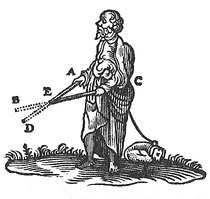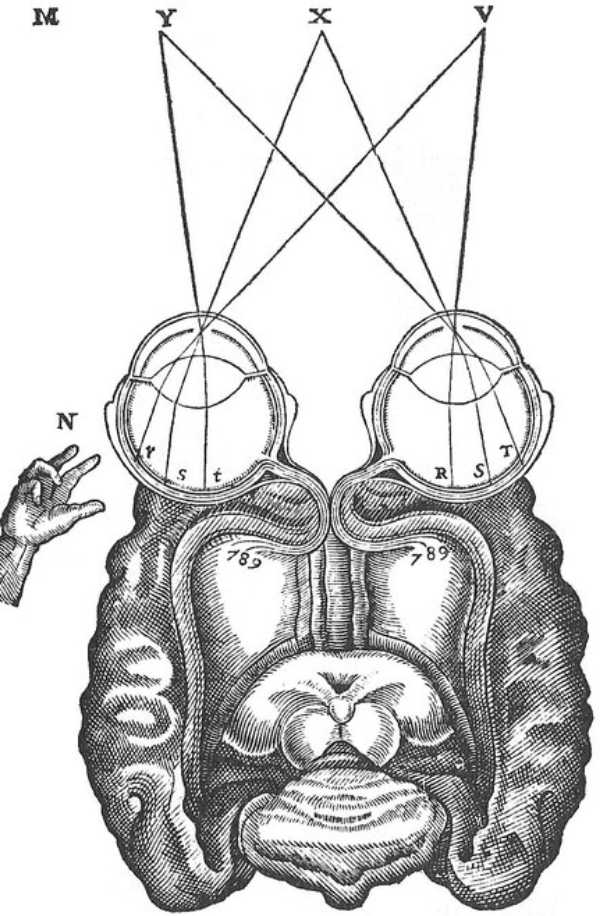Distance Perception
Table of Contents
The sensation of light is stronger or weaker depending on:
- the object’s distance
- the pupil’s size
- the image painted in the back of the eye is larger or smaller
This is why:
- a painting of a prairie, painted with diverse colors, will appear from afar as all white or all blue
- all bodies appear less distinctly from afar than from up close
- the more space an image occupies at the back of the eye, the more distinctly it can be seen.
Distance perception depends on the position of the small parts of the brain where the nerves originate.
- Our body parts have nerves in them
- When these nerves change their position, they trigger a corresponding change to the position of the small parts of the brain
This makes the soul:
- know in the current location of the body-part that animates it, relative to the other body-parts
- transfer its attention from that body part to the external surroundings in a straight line to infinity.
The nerves of the hands of a blind person causes a certain change in his brain whenever he turns his:
- hand
AtowardsE, or - hand
CtowardsE

This allows his soul to know:
- the location
AorC - all the others that are in the straight line
AEorCE
This lets him carry his attention as far as the objects B and D and determine their locations without knowing or thinking about those where his two hands are.
Thus, when our eye or our head turns to the side, the nerves in our eyes or neck alert causes a change in our brain that alerts our soul.
How one knows towards which side an object is located without touching it.
The small filament of the optic nerve at R, S, or T is linked to the part of the brain 7, 8, or 9.
- This makes the soul able to know all the places that are in the line
RV,SX, orTY.

This is why objects can be seen in their true location even if the picture they imprint in the eye is completely inverted.
The blind man can feel:
- the object
Bto the right, through the intervention of his left hand - the object
Dto the left, through the intervention of his right hand.

This blind man does not judge that a body is double, even though he touches it with both hands.
Similarly, when our eyes both look to the same place, they do not make us see just 1 object there.
The vision of distance depends no more than that of the situation on any images sent from the objects.